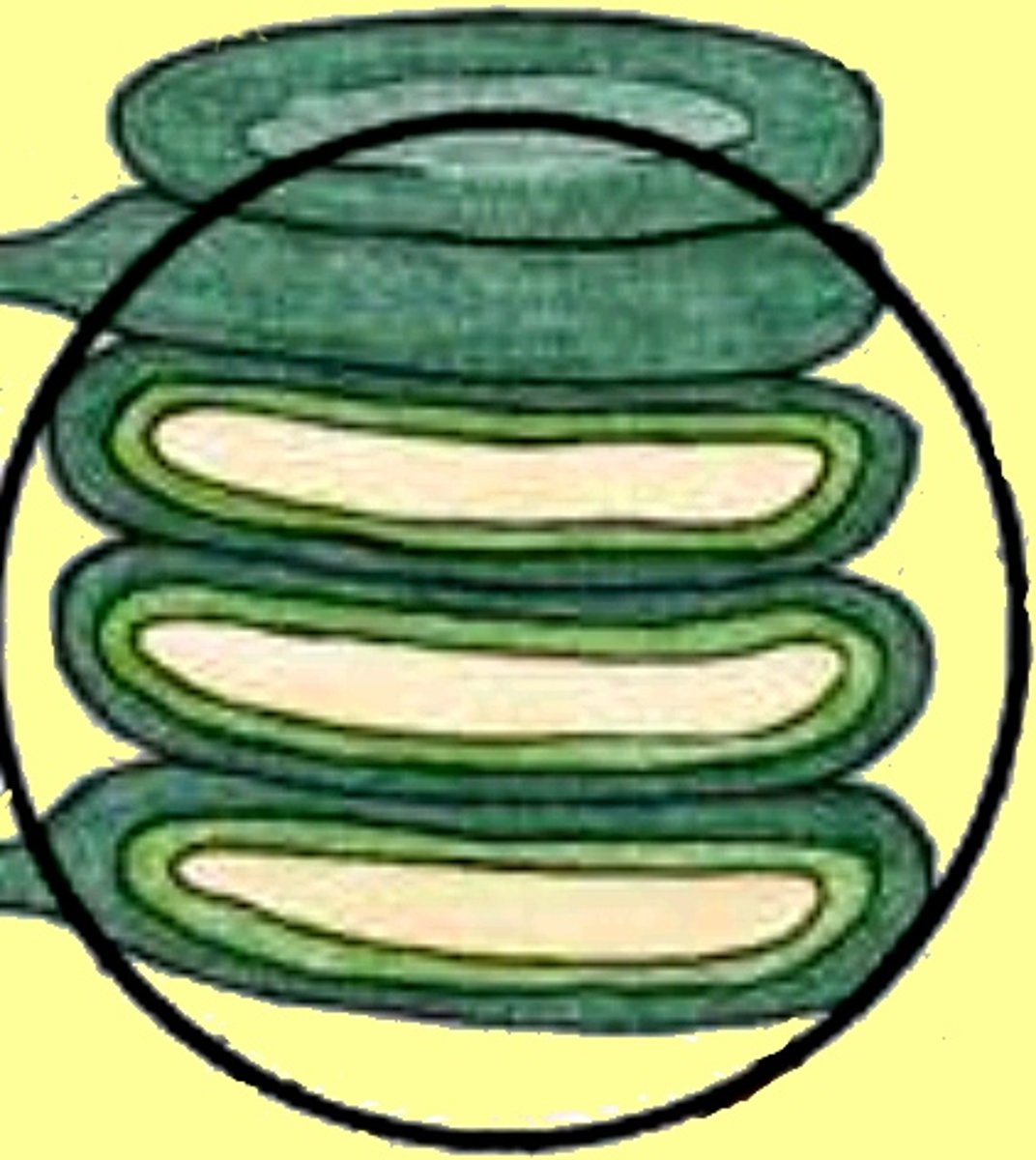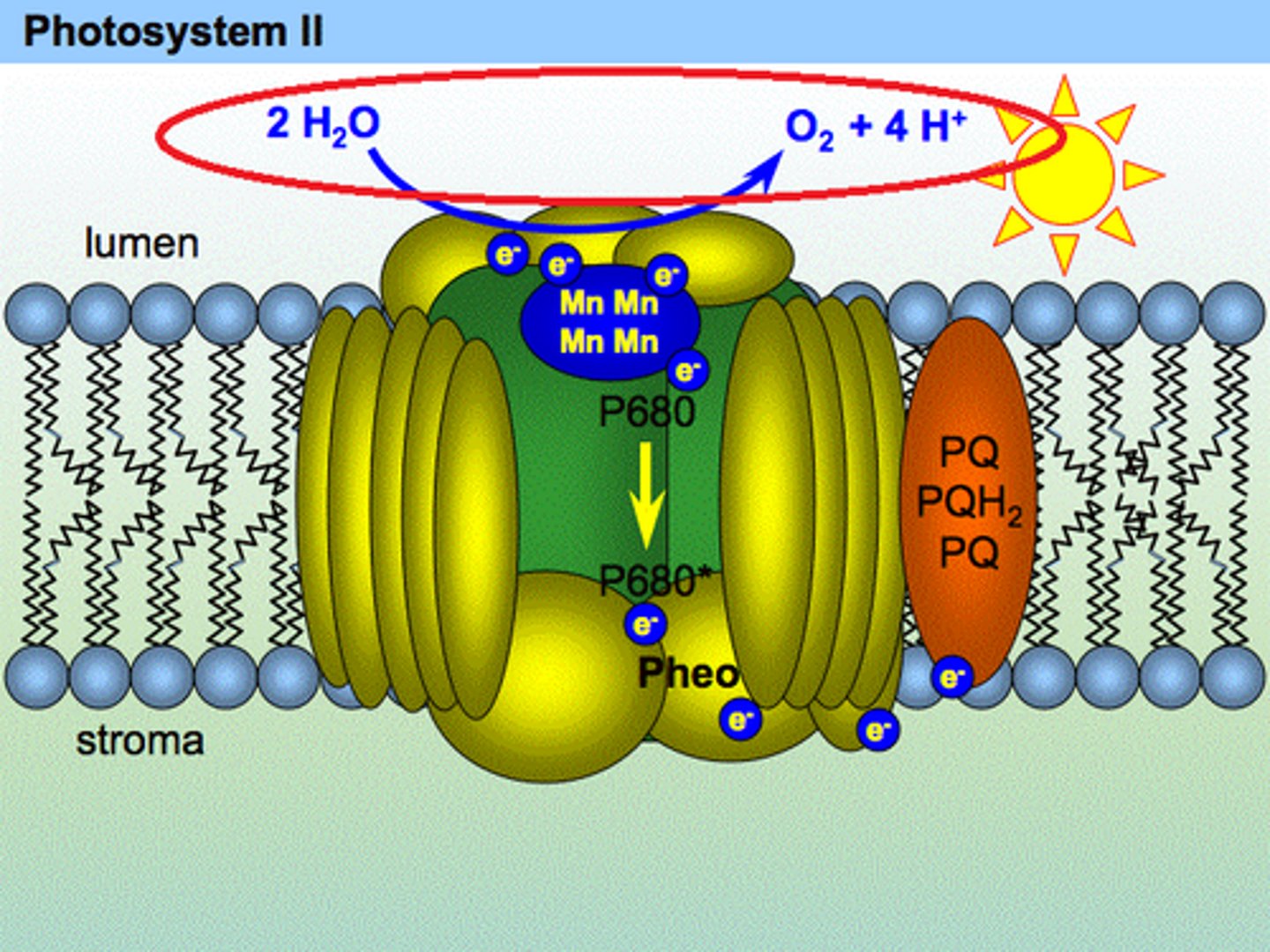Photosynthesis Key Terms
1/14
There's no tags or description
Looks like no tags are added yet.
Name | Mastery | Learn | Test | Matching | Spaced |
|---|
No study sessions yet.
15 Terms
Autotroph
An organism that synthesizes its own food.
Chloroplast
An internal symbiont to plants and green algae that performs photosynthesis.
Thylakoids
Disc shapes reaction centers inside the chloroplast, bounded by a membrane.

Thylakoid Membrane
The membrane surrounding the thylakoid where the light reaction occurs.
Stroma
The fluid space surrounding the thylakoids in which the Calvin cycle reactions occur.

Photolysis
The splitting of water into oxygen, electrons and hydrogen protons by an enzyme in the light reaction.

The Light Reaction
The process of using chlorophyll to produce ATP and NADPH by the use of sunlight.
Chemiosmosis
The process where hydrogen protons (H+) flow through ATP synthase from high to low concentration and generate ATP. The ATP will be used in the Calvin Cycle.
NADPH
This is an electron shuttle that is formed in the light reaction. It will be used in the Calvin Cycle and NADP+ is recycled back to the light reaction.
Chlorophyll
This is the pigment that captures wavelengths of light. The light reflected off is green.
Calvin Cycle
A series of enzyme reactions that fix carbon. Several turns of the cycle eventually lead to building sugar (glucose).
Carbon Dioxide
The carbon source for building sugar in photosynthesis.
End products of photosynthesis
1 glucose + 6 Oxygen molecules
Reactants of photosynthesis
6 water molecules + 6 Carbon dioxide molecules
Function of photosynthesis
to store sunlight energy in sugar